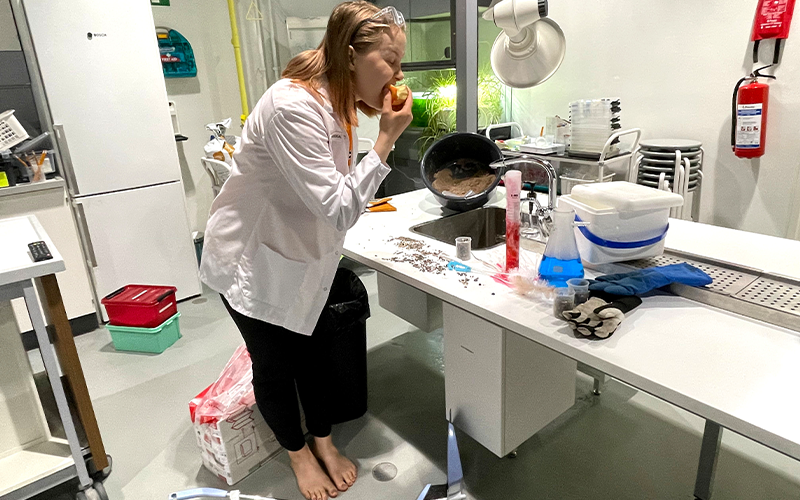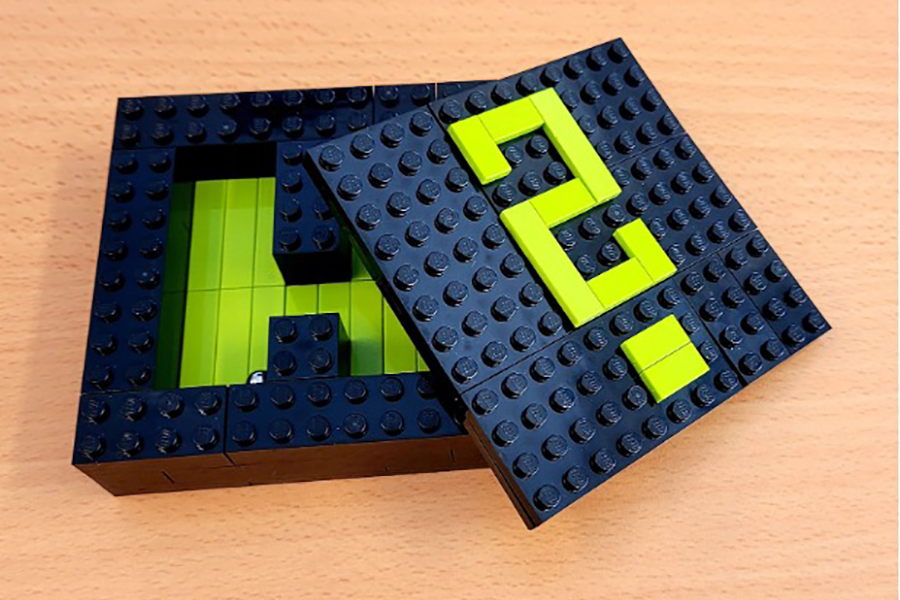Supporting materials
Antarctic escape scoring sheet
Rainforest rally scoring sheet
Download
Download this article as a PDF

Live by your wits: group interviews based on disaster scenarios provide a fun opportunity to develop scientific literacy and transferable skills.
Group interviews are a common way for large companies to assess multiple candidates simultaneously. It has proved to be a cost-effective method to evaluate how people interact with each other in what can be a high-stakes environment. Group interviews are designed to test soft or transferable skills, such as communication and leadership. While in a company this approach is pragmatic, they knowingly or unknowingly tend to utilize role-playing situations that also examine scientific literacy. From desert survival to missions on the moon, group-interview activities often use scenarios with environmental limitations, where participants must work together to prioritize a list of items to ensure their survival.
This type of activity can be readily applied to a science classroom, providing a novel and engaging approach for teaching and learning. In the past decade, soft skills have emerged as important factors linked to student achievement, emotions, motivation, and life satisfaction. Such skills include adaptability, curiosity, and social awareness.[1] Yet, many science curricula are dominated by learning objectives grounded in scientific knowledge. While efforts have been made to make science more relevant, resources that highlight the inherent social aspects of science are warranted. Developing an understanding of the social and institutional dimensions of science aid students in the development of scientific literacy.[2]
Accordingly, group interviews with a distinct focus on science can provide a contextual learning experience with a real-world application. This activity is aimed at science lessons for students aged 15–17 but can work with younger students and even adults. The premise of the activity is that students are presented with a scenario or short story. Here, we give three examples.
In each instance, a list of unique items is given. Many items listed are linked to the science curriculum, while others are items that students will have interacted with in their daily lives. The goal of the activity is that, through constructive debate and argumentation, students must come to a group consensus and list the items from most to least important.
What makes the activity ‘tick’ is selecting a scenario with environmental limitations and variables, combined with a balanced list of items that open avenues for scientific reasoning and discourse.
The Antarctic escape activity is described below, but the other two follow a very similar format. Materials for all three scenarios are provided in the supporting material.
This scenario places students in an isolated Antarctic research facility. Upon the accidental release of a pathogen, students must work together to use items effectively and ensure their survival.
This activity should take around 40 minutes.

0–25 Excellent – you and the team survive and become minor celebrities.
26–32 Good – you and the team are shaken up, but happy to be alive.
33–45 Average – you are found wandering in the tundra and are helicoptered to safety.
46–55 Fair – you survive the expedition but leave your researcher role, turn your back on science, and spend the rest of your days believing the Earth is flat.
56–70 Poor – you are emotionally scarred for life and develop globophobia (fear of balloons).
71–112 Very poor – you become infected and don’t make it out of the research facility.
The effectiveness of this activity relies on the teacher acting as a facilitator of arguments and debates. By moderating behaviour, the teacher can try to ensure that louder voices are limited in terms of their impact and quieter voices are given time to talk. This is important, as the idea of a group interview can be intimidating for less-confident students. Teachers should facilitate an inclusive learning environment.
In terms of items, the results give a justification for their placement, but teachers can use their knowledge and experience to encourage discussions around their usefulness. Some items may have multiple use cases. For example, a lab notebook might provide useful information in a survival scenario and can also be used as fuel in a fire. Furthermore, some items have ethical implications. For example, pistols and bullets are often included in these types of group interviews. While they may have some practical use, the question remains as to who gets control of these items in a survival scenario where you may not be able to trust everyone. Students will often think about items from a scientific or survival point of view, but not an ethical one. The item ranking that is developed collaboratively by the class should reflect their input. A persuasive argument for an ‘incorrect’ item is important, especially if that student convinces classmates to follow their line of thinking.
Student self-scoring is designed to be fun, and each score informs the student of what happened to them in the end. Some students will survive, some won’t, and others will turn their back on science and become flat-earthers. This self-score should not impact too much on whether the student gets through to the next round of interviews, as the focus of the activity is on developing transferable skills. Expanding on this, there may even be a case where a student gets all the science incorrect but is charismatic and convincing to the point that others in the group follow. This can lead to discussions around misinformation and critical thinking. Teachers can decide who has passed the activity based on their observations of the class. Generally, three or four students stand out in terms of their engagement, teamwork, arguments, and persuasiveness. For teachers who would like a more formal assessment for their students, the rubric provided will allow them to score students and determine who has passed the activity and who can improve. This is particularly beneficial if you plan on running different scenarios multiple times with the same class.
[1] Feraco T et al. (2023) An integrated model of school students’ academic achievement and life satisfaction. Linking soft skills, extracurricular activities, self-regulated learning, motivation, and emotions. European Journal of Psychology of Education 38: 109–130. doi: 10.1007/s10212-022-00601-4
[2] Erduran S (2023). Social and institutional dimensions of science: The forgotten components of the science curriculum? Science 381: 6659. doi: 10.1126/science.adk1509

What can go wrong in a chemistry lab? Explore lab safety and consolidate the new knowledge by creating a fun horror story about a lab disaster.

Basic research is often misunderstood by the public and misconstrued by the media. Try this role play to learn how research is funded and how basic…

Thinking outside the box: explore the nature of science by building LEGO mystery boxes and challenging your students to solve the…